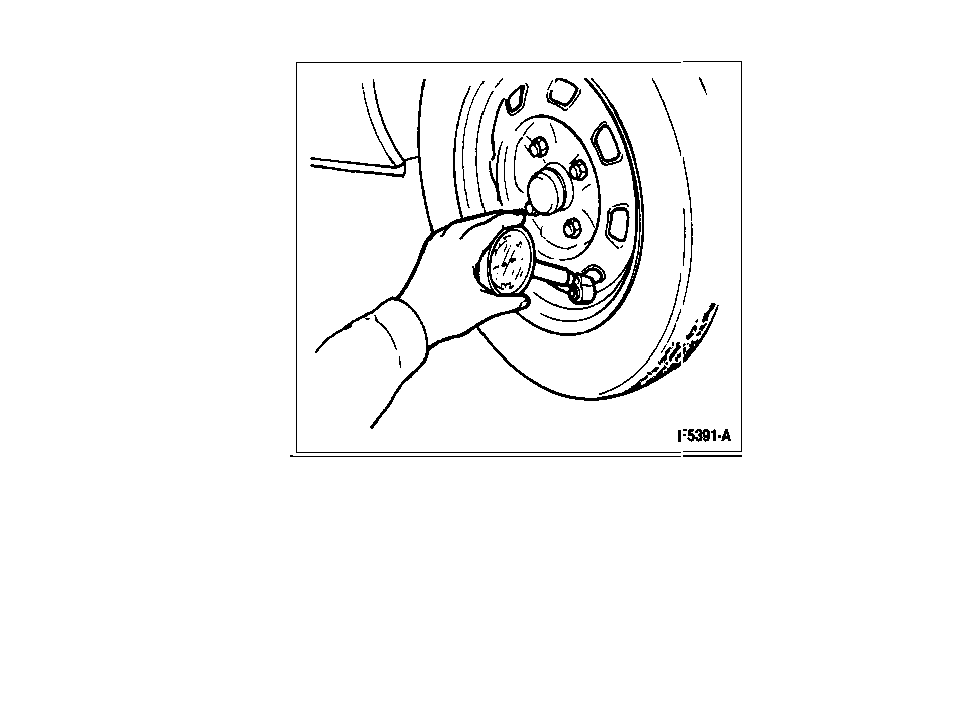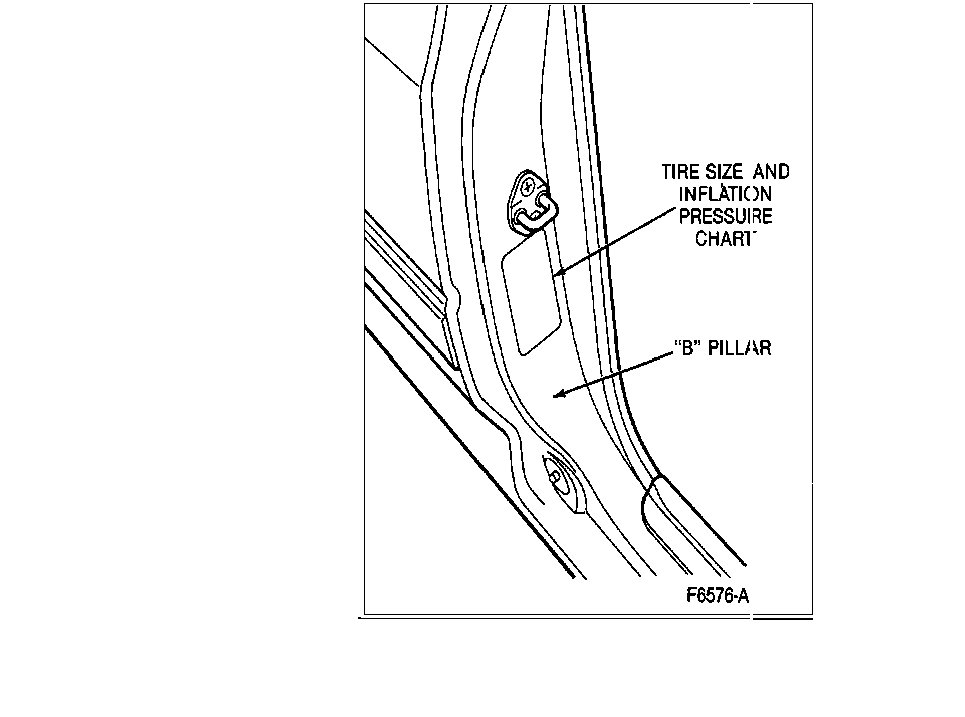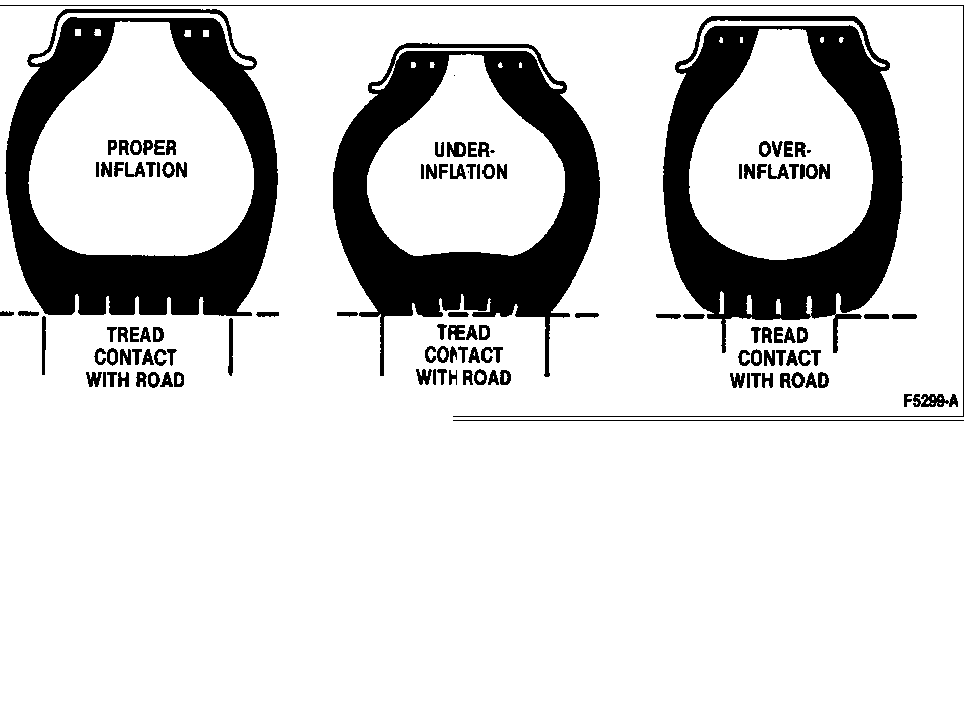
Checking Tire Inflation Pressure
Always check tire inflation pressure using an accurate pressure gauge. Never
inflate the tires to levels above or below the recommended pressure. Tire
inflation pressures are carefully calculated to give the vehicle satisfactory
ride and steering characteristics, without compromising tire tread life.

The recommended vehicle load capacities and tire inflation
pressures for full or reduced load operation are listed on the Tire Size and
Inflation Pressure Chart. This chart is provided in the Owner Guide and on a
label attached to the passenger door B-pillar.

Check and adjust tire inflation pressure only when the tires
are cold (after the vehicle has been parked for at least three hours), or after
the vehicle has been driven less than 3.2 km (2 miles) at speeds less than 64
km/h (40 mph).
Do not reduce the tire inflation pressure when the tires are hot, or after the
vehicle has been driven over 3.2 km (2 miles) at speeds in excess of 64 km/hr
(40 mph). Under such conditions, pressures can increase as much as 41 kPa (6 psi)
over cold inflation pressures.
After checking or adjusting the tire inflation pressures, make certain to
install the tire valve stem caps. The caps help prevent air leaks and keep dust
and dirt out of the valve stems.
Check the valve stems. If any valve stem is worn, cracked, loose, or leaking
air, replace it.
CAUTION:
Radial-ply tires have highly flexible sidewalls which produce a noticeable
sidewall bulge, making the tires appear underinflated. This is a normal
condition for radial-ply tires. Do not attempt to eliminate this bulge by
overinflating the tires.

*Copyright © 2004 Ford Festiva Com-All Rights Reserved
*except data and images courtesy of Ford